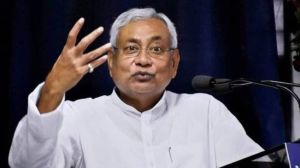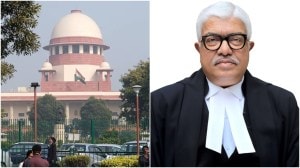Pakistan in past tense
An important political statement on the ideological foundation of Pakistan was made by the British archaeologist M Wheeler when he titled...

An important political statement on the ideological foundation of Pakistan was made by the British archaeologist M Wheeler when he titled his book Five Thousand Years of Pakistan. Likewise, the multi-volume History of the Freedom Movement in Pakistan invented a unified and continuous historical tradition starting with 1707, the year of Aurangzeb’s death. Indeed, the intellectual challenge for the Pakistani historians in the 1950s and ’60s was to lend weight and historical legitimacy to `Muslim nationalism’ and its fruition in the birth of a Muslim nation. Their task, as the editors of the Freedom Movement volumes stated in 1957, was to tell the “remarkable story of their (Muslim) survival and their attainment of sovereign status as the emblem of their freedom.”
Historians, some having taught in Indian universities, had to change gears on reaching Pakistan. Scholars like I.H. Qureshi, having taught at St. Stephen’s College and the University of Delhi before their trek to Pakistan, had to rewrite their own histories. They had to construct a different past altogether, one that was at variance with their earlier explorations.
They had to begin to search for heroes and martyrs, involve new symbols and traditions, and discover milestones, such as the 1857 revolt, for the historical antecedents of Pakistan. In the process, the scholar Shaikh Ahmad Sirhindi, a contemporary of Jahangir, was pressed into service. So were ShahWaliullah, a leading 18th century thinker, and Syed Ahmad Barelwi, who led sporadic movements in mid-19th century against the British.
In their relentless search for ideologues, the Pakistani historians also turned to Syed Ahmad Khan, the major catalyst for social and educational reforms among Muslims. They traced the `two-nation’ theory to some of his utterances.
The issue was not just the defence of Partition, or Independence from Pakistan’s vantage point, but a different reading of the past involving, among other things, the rejection of a diverse but vibrant composite cultural and intellectual legacy. The legitimation of a Muslim homeland required, first of all, the image of the Muslims as a monolithic entity, acting in unison and committed to specifically Islamic values and norms.
Second, it was necessary to portray them as a beleaguered community. Notice the following observation: “With the debris of the constructive effort of centuries around them, the Muslims of the subcontinent stood alone. They were weak, disorganised and backward, har-dly equipped for a greatstruggle, standing on the cross-roads of destiny without knowing in which direction safety lay and yet determined to fight for their right of existence and freedom.”
This formulation, though clumsily put, sums up a particularistic world-view. At the heart of it is the tendency to demonise the Hindus, more than the British, and to attribute Muslim social and educational backwardness to the unremitting, overwhelming power and prejudice of the Hindus. No salience isattached to nearly two centuries of British rule, to the exploitative nature of colonialism.
Instead, we are introduced to a society where the actions of the colonial government seem to make no difference whatsoever to the fortunes or misfortunes of the people, Muslims included. This is a misleading and an ahistorical approach. But, then, the mythology of Muslim nationalism has been built on `Hindu’ belligerence and hostility towards the Muslims. The historian’s project has, thus, been to present an image of an always enlightened, largely innocent Muslim community.
The agenda of fellow-historians in India has changed over the decades. Not so in neighbouring Pakistan, where conservative die-hards still base their arguments on the incompatibility of Islam and Hinduism, the cornerstone of M.A. Jinnah’s two-nation theory. Yet some new, though muted, voices are being heard: the 50th year of Independence may have just about given impetus to a re-evaluation of old theories and assumptions.
The historian Ayesha Jalal, tho-ugh based in the US, has charted an independent intellectual trajectory, freeing herself from the ideological claptrap in Pakistan historiography. A recent book, published by the Oxford University Press in Karachi, introduces a regional dimension to Pakistan’s history. What is lost sight of in the controversy surrounding the two-nation theory, argues its author J. Hussain, “is the basic geographic good sense (sic) of an agricultural nation centred on the great Indus Valley river system.” Finally, the same publishing house may have dithered some years ago in publishing Common Heritage, a collection of essays by Indian and Pakistani writers on common affinities, a common past and oldfriendships.
Nowadays, the intellectual ambience has changed. So has the political climate after Zia-ul Haq’s death. The intelligentsia continues its search for unity and cohesion in a country torn apart by regional, ethnic and sectarian fissures.
We must not be apprehensive of this exercise, for Pakistan’s stability and survival as a democracy is and must remain central to our concerns. The sporting exchanges augur well for the future. The bus diplomacy is a sign of political wisdom and maturity. Never before did so momentous an event takeplace in the history of India-Pakistan relations.
As the bus to Lahore rolls on today, it is hard to predict the outcome of so important an event. One simply hopes that frequent contacts and regular interactions would sensitise the people of India and Pakistan to each other’s fears and anxieties. The demarcation of boundaries is a settled andirrevocable fact. But borders, as the post-War European experience demonstrates, can also unite. We can build bridges of understanding and live as civilised neighbours. Again, this is what we learn from the historical and contemporary experiences of several societies.
My wish is that fellow-historians here and in Pakistan would sit together and revisit the old-fashioned theories on pluralism, and detail the shared traditions that had enabled Hindus and Muslims to live harmoniously for centuries. Hopefully, someday I would also cross the Wagah border with my colleagues. This time not to watch cricket, but on a mission to bridge the intellectual gulf that separates the scholarly community in the subcontinent.





- 01
- 02
- 03
- 04
- 05


























